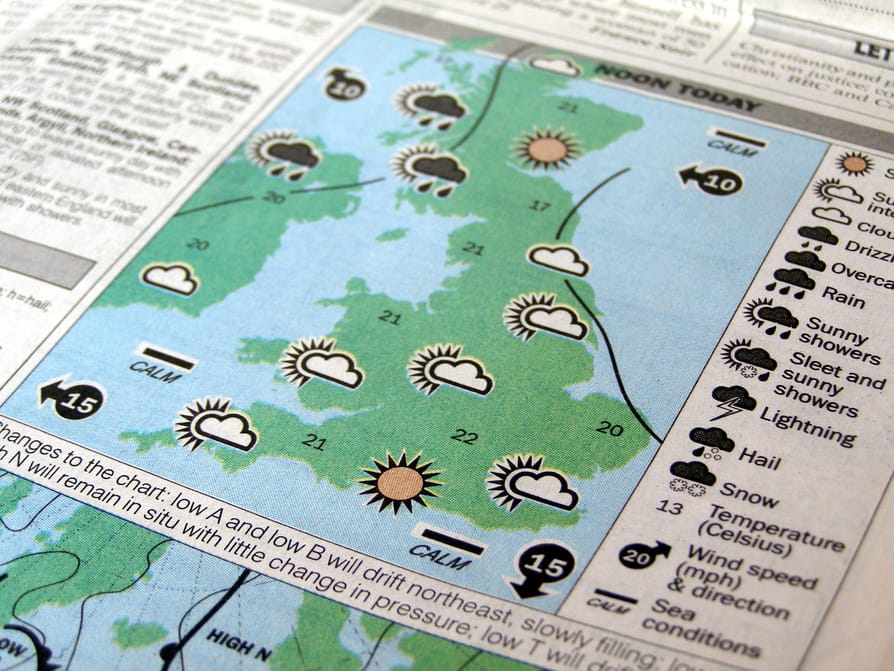Predicting rainfall in a changing climate
Rumpelstiltskin may have spun gold from straw, but could he have derived local rainfall projections from global climate models? When it comes to developing infrastructure for water sensitive cities in a climate-changed world, information about future local rainfall patterns is akin to gold.
Decisions based on data
While stormwater is now widely recognised as a valuable water source, harvesting it effectively requires investment in infrastructure. The question is What will be needed in the future? Do we prepare for more rain or less? Regular, steady showers; or less frequent, more intense rainfall?

Historically, future rainfall projections were based on past records. But these are less reliable in a changing climate. Moreover, as we enter uncharted territory, information becomes critical for the effective use of infrastructure dollars to increase our cities’ resilience.
Professor Christian Jakob leads the CRC for Water Sensitive Cities (CRCWSC) Sub-project B1.1 (Cities as water supply catchments: Urban rainfall in a changing climate). Together with his team from Monash University, he is developing a computer-based model that will provide future localised rainfall projections to support design decisions in the transition to water sensitive cities.
From global to local: a formidable technical challenge
So how do you develop future projections for such localised areas as cities – or indeed for individual suburbs? Christian and his team are working with around 20 global climate models (GCMs), which are the primary tools for studying future changes to climate. However, the spatial resolution of GCMs is 100–200 km, which is too coarse to capture elements such as clouds and rain – and temporal resolution varies from daily to monthly. This is of little use: design of stormwater harvesting schemes requires rainfall projections on a 1 km spatial scale at 10-minute intervals.
Translating information from a large-scale to a city-scale is a formidable technical challenge. It requires a method known as downscaling, which involves integrating data from GCMs with local observations to make predictions about local climate. Uncertainty is an inevitable consequence: as the resolution increases, so do the number of variables and assumptions.

Knowing what we don’t know
Understanding the extent of uncertainty is a critical component of Sub-project B1.1. “People often don’t realise that knowing the uncertainty is really important,” Christian says. “If I present a result as certain and people make decisions on it, and it turns out I was wrong, they might have wasted a lot of money, and they might have a disastrous outcome. That is much worse than if I present my result as uncertain and say, ‘You need to prepare for this range of possibilities.’ ”
Uncertainty is introduced at each stage of building the model. For a start, the 20-odd GCMs produce different answers for different carbon emission scenarios. To capture the range of possible outcomes, the Intergovernmental Panel on Climate Change has produced four realistic scenarios, from zero further carbon emissions to burning all remaining fossil fuels. The four scenarios are applied to each GCM, yielding 80 answers – which become the input for Christian’s model. Accumulating further variables and assumptions through downscaling adds additional levels of uncertainty, and increases the number of simulations required to generate meaningful output.
Downscaling techniques
After experimenting with various existing downscaling methods, Christian and his team have developed an innovative stochastic technique to deal with uncertainties in downscaling precipitation to very small scales. The approach has been to adapt statistical models that were originally developed to predict weather six hours ahead. Though never before used for climate downscaling, these models produce very high-resolution space and time data. Again however, variability among the input parameters increases uncertainty – which means still more simulations are needed. The team has made headway on input variability by establishing a relationship between rainfall distribution and weather regimes: put simply, a rainfall regime with a northerly wind will have a different set of parameters from one with a southerly wind. Incorporating this sophistication has improved the accuracy of the model’s output.
Taking it to the tropics
So far, tests on the model for Melbourne, Adelaide, Sydney, and Brisbane indicate that it is working well. The next step is to try the approach in the tropics. Dr Shie-Yui Liong, Principal Research Fellow at the National University of Singapore’s Tropical Marine Science Institute, will, with his research group, adapt Christian’s stochastic model for a tropical climate.
The convective rainfall of the tropics poses a distinct challenge: rainfall is very difficult to predict because the localised air column can saturate rapidly with moisture evaporating from the ocean surface, meaning that rain clouds develop quickly. If the stochastic model can be adapted for a tropical climate, it will be of great use in this region.
Singapore’s Public Utilities Board is interested in the likely impact of climate change – on flooding in particular. The Singapore research group will use the stochastic model to project rainfall extremes and derive future storm drainage design curves.
Real-world outcomes
Having spent two years developing their model, Christian and his team plan to run around 10,000 simulations, which will ultimately lead to probabilistic predictions such as an 80% chance of scenario A, or a 40% chance of scenario B. The results will feed directly into hydrological models such as MUSIC, which in turn will deliver a range of answers upon which to base design decisions. So far, the team has produced some examples for MUSIC modellers to play with; the next phase will be to crank out usable results.
“Outputs from MUSIC might indicate – for example – that the best strategy would be to deploy a lot of stormwater harvesting infrastructure in the western suburbs and not so much in the eastern suburbs,” explains Christian. “Decisions will be based on the probability of various scenarios. For example, if we want to build it foolproof, we build it this way; if we want to build it 80% foolproof, we build it that way.”
Christian also flags the possibility that uncertainties may be so large that we cannot confidently predict what will happen. This, he says, would also be an important result. “The outcome might be that drought or flooding are both possible. So that would mean we need to make ourselves resilient as a society to both scenarios.”
Nicola Dunnicliff-Wells for the Mind Your Way team